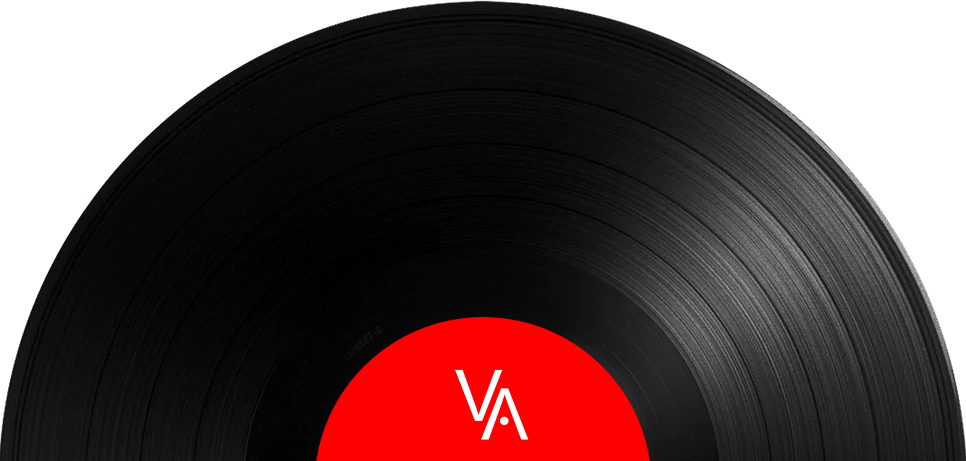
I am listening to the Mobile Fidelity (MFSL) UHQR version of this record, which was released in 1983 as a strictly limited edition of 5,000 numbered copies. Meticulously remastered from the original master tapes, it's pressed on 200 grams of virgin vinyl and packaged in a box with a letter of authenticity, a mail-in registration card, a technical specifications manual and thick foam padding, all of which is definitely overkill and mostly just marketing hype from MFSL.
It's also annoying as hell because I have to extract the record from this cocoon every time I want to listen to it. And the UHQR series of records MFSL released - there were only eight of them - all came in nondescript black boxes with no cover art (other than a little black-and-white representation on a black cardboard inner sleeve). I never liked that at all and don't understand why they chose to go that route instead of displaying the cover art full size and in colour on the front. And this LP has an interesting cover, which is always interesting to look at. Except here.
Packaging aside, this is a very high quality pressing that is now long out-of-print and almost impossible to find. If you do find a copy, especially a lower number, you’ll pay hundreds for it - if it’s a used copy in really good condition. Sealed copies can cost as much as $700 or $800!
The UHQR recordings Mobile Fidelity put out sound stunning. This pressing is considered by many audiophiles to be the best sounding of the many different I Robot pressings in existence, something I confirmed for myself by playing it back-to-back against both an original pressing and a recent reissue. In my opinion, this pressing has much more warmth than the others, which all tend to sound a bit bright. The sound of this pressing literally fills the room with warmth!
There isn’t a bad cut on this LP. It’s just really good music - very well recorded using the best musicians available. That’s right - the Alan Parsons Project wasn’t really a band. It was Alan Parsons, backed up by whoever he felt like being backed up by, kind of like how Steely Dan was really just Walter Becker and Donald Fagen backed up by top-notch studio session players. Over the years a lot of musicians passed through the aptly-named “Project,” and they were all excellent contributors to whatever vision Parsons was working on at the time. Andrew Powell and David Katz might be the only names you'll recognize as participants in this particular project.
I like to put this record on the turntable on a fairly frequent basis. It's my wife's favourite record. I turn the lights down low and turn off my phone. Then I crank the volume and lay back.
I Robot is the second album by The Alan Parsons Project. Released in 1977, it was originally intended to be based on the I, Robot stories written by Isaac Asimov. But the rights had already been granted to a movie company, so Parsons altered the title by removing the comma after "I" and the recording became a more generic robot-themed project. The cover inlay reads: "I Robot ... The story of the rise of the machine and the decline of man, which paradoxically coincided with his discovery of the wheel ... and a warning that his brief dominance of this planet will probably end because man tried to create robot in his own image."
The title of the final track, Genesis Ch.1 v.32, cleverly adheres to this theme by implying a continuation to the story of Creation, since the first chapter of Genesis only has 31 verses.
The cover features the escalator tubes in Terminal 1 at Paris' Charles de Gaulle Airport (which I've ridden), over which a see-through robot with an atom brain has been superimposed. The robot also appears on the label of the record - although not on this UHQR pressing, which is just black type over a silver background. Another annoyance.
The album spawned three singles: I Wouldn't Want to Be Like You, Don't Let it Show and Day After Day (The Show Must Go On). Another track, Breakdown, almost became a single but instead went into heavy FM rotation and continues to be heard on classic rock radio stations to this day.
The album has seen several reissues in every format - even 8-track, back in the day - including a Legacy Recordings remastered edition reissue in 2013 that contained several bonus tracks. There was also a vinyl reissue with the same remastering. The MoFi version of this record is …
UPDATE: Traded this record for $300 in store credit at my local record store. Mobile Fidelity is about to release this record as a One Step, which I am certain will sound outstanding, so I decided to cash in the equity I had in this pressing.
I am listening to the Mobile Fidelity (MFSL) UHQR version of this record, which was released in 1983 as a strictly limited edition of 5,000 numbered copies. Meticulously remastered from the original master tapes, it's pressed on 200 grams of virgin vinyl and packaged in a box with a letter of authenticity, a mail-in registration card, a technical specifications manual and thick foam padding, all of which is definitely overkill and mostly just marketing hype from MFSL.
It's also annoying as hell because I have to extract the record from this cocoon every time I want to listen to it. And the UHQR series of records MFSL released - there were only eight of them - all came in nondescript black boxes with no cover art (other than a little black-and-white representation on a black cardboard inner sleeve). I never liked that at all and don't understand why they chose to go that route instead of displaying the cover art full size and in colour on the front. And this LP has an interesting cover, which is always interesting to look at. Except here.
Packaging aside, this is a very high quality pressing that is now long out-of-print and almost impossible to find. If you do find a copy, especially a lower number, you’ll pay hundreds for it - if it’s a used copy in really good condition. Sealed copies can cost as much as $700 or $800!
The UHQR recordings Mobile Fidelity put out sound stunning. This pressing is considered by many audiophiles to be the best sounding of the many different I Robot pressings in existence, something I confirmed for myself by playing it back-to-back against both an original pressing and a recent reissue. In my opinion, this pressing has much more warmth than the others, which all tend to sound a bit bright. The sound of this pressing literally fills the room with warmth!
There isn’t a bad cut on this LP. It’s just really good music - very well recorded using the best musicians available. That’s right - the Alan Parsons Project wasn’t really a band. It was Alan Parsons, backed up by whoever he felt like being backed up by, kind of like how Steely Dan was really just Walter Becker and Donald Fagen backed up by top-notch studio session players. Over the years a lot of musicians passed through the aptly-named “Project,” and they were all excellent contributors to whatever vision Parsons was working on at the time. Andrew Powell and David Katz might be the only names you'll recognize as participants in this particular project.
I like to put this record on the turntable on a fairly frequent basis. It's my wife's favourite record. I turn the lights down low and turn off my phone. Then I crank the volume and lay back.
I Robot is the second album by The Alan Parsons Project. Released in 1977, it was originally intended to be based on the I, Robot stories written by Isaac Asimov. But the rights had already been granted to a movie company, so Parsons altered the title by removing the comma after "I" and the recording became a more generic robot-themed project. The cover inlay reads: "I Robot ... The story of the rise of the machine and the decline of man, which paradoxically coincided with his discovery of the wheel ... and a warning that his brief dominance of this planet will probably end because man tried to create robot in his own image."
The title of the final track, Genesis Ch.1 v.32, cleverly adheres to this theme by implying a continuation to the story of Creation, since the first chapter of Genesis only has 31 verses.
The cover features the escalator tubes in Terminal 1 at Paris' Charles de Gaulle Airport (which I've ridden), over which a see-through robot with an atom brain has been superimposed. The robot also appears on the label of the record - although not on this UHQR pressing, which is just black type over a silver background. Another annoyance.
The album spawned three singles: I Wouldn't Want to Be Like You, Don't Let it Show and Day After Day (The Show Must Go On). Another track, Breakdown, almost became a single but instead went into heavy FM rotation and continues to be heard on classic rock radio stations to this day.
The album has seen several reissues in every format - even 8-track, back in the day - including a Legacy Recordings remastered edition reissue in 2013 that contained several bonus tracks. There was also a vinyl reissue with the same remastering. The MoFi version of this record is …

UPDATE: Traded this record for $300 in store credit at my local record store. Mobile Fidelity is about to release this record as a One Step, which I am certain will sound outstanding, so I decided to cash in the equity I had in this pressing.



